Keep Calm and Dry Tea: Designing an ATEX-Compliant Tea Leaf Dryer
Tea may be renowned for its soothing qualities, but tea leaves have the potential to cause catastrophic dust explosions if not carefully controlled. Thankfully, Gido van Tienhoven and his team at Ex-Machinery are on hand to ensure there is no trouble brewing
AS THE founder and lead engineer at Ex-Machinery, a company specialising in ATEX and explosion safety solutions, I recently faced an intriguing challenge: designing a tea leaf dryer that could operate safely in potentially explosive atmospheres.
Our client, a reputable European company with operations in India, required an industrial mixer equipped with an ATEX-compliant heater for drying tea leaves in their production plant. Although ATEX legislation is mandatory in Europe, our client’s commitment to safety dictated the implementation of these standards worldwide.
What is ATEX?
ATEX refers to the European Union’s directives and regulations for controlling explosive atmospheres and protecting workers from explosion risks in potentially hazardous environments. These regulations apply to a wide range of industrial sectors where combustible dusts, gases, or vapours may be present during manufacturing processes. These hazardous areas can be found in various industries, including oil and gas, pharmaceuticals, food processing, offshore operations, and chemical manufacturing plants.
The challenge: mitigating dust explosion risks
Drying tea leaves is a crucial step in tea processing and dried tea leaves contain fine dust particles, known as fannings. When these particles become airborne and mix with air, forming a dust cloud, they can potentially cause an explosion if exposed to a hot surface or spark. The risk is real, and the consequences can be severe, as demonstrated by a series of sugar dust explosions and fire which occurred at the Imperial Sugar manufacturing facility in Georgia, US in 2008 which killed 14 and injured 36.
Recognising this threat, our team set out to design a solution that would ensure the safe drying of tea leaves while adhering to the stringent requirements of ATEX Zone 22 – an area where combustible dust is likely to be present occasionally.
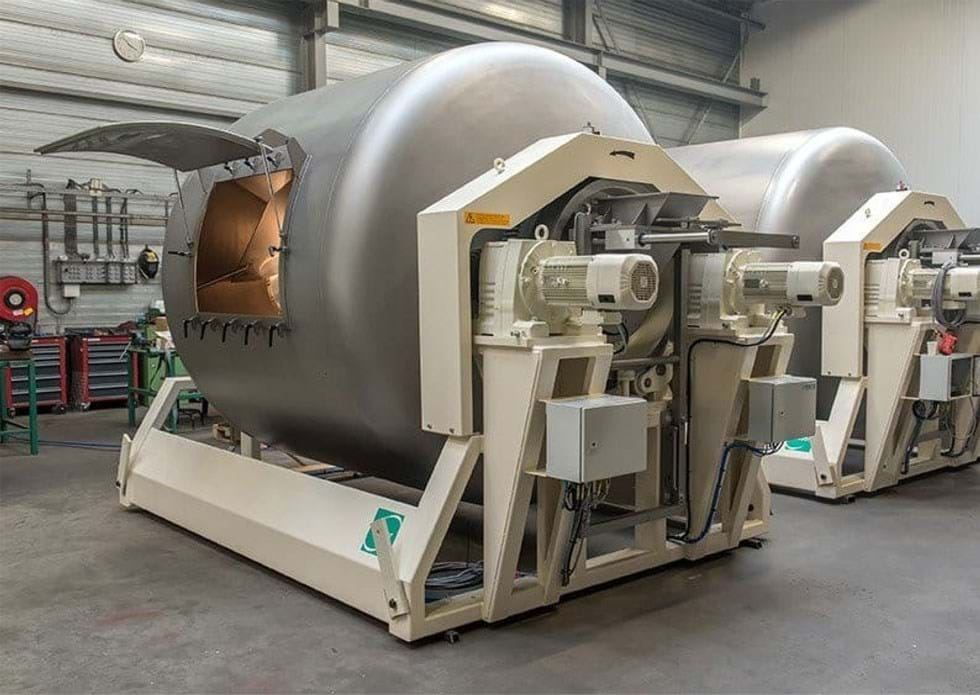
Getting the specifications right
Before we could begin working on the equipment design, it was crucial to understand the combustible properties of the specific dust we were dealing with – tea dust. This would allow us to properly assess the level of safety precautions required and set the appropriate engineering specifications from the outset.
One invaluable resource we used was an online dust explosion properties database maintained by the German Social Accident Insurance (DGUV).1 This extensive database holds data on over 6,000 dust samples, including the critical characteristics of tea dust particles that informed our safety calculations and minimum requirement criteria. With this empirical data as a foundation, we could ensure our design would adequately mitigate the risks posed by this particular explosive atmosphere.
The tea leaf drying process typically begins with freshly plucked tea leaves being withered to remove excess moisture. The withered leaves then go through a rolling or cutting step to begin breaking down the leaf structure. Next, the rolled or cut leaves enter the drying phase, which is where our ATEX-compliant heater comes into play. The leaves are loaded into a large gentle touch industrial mixer, and hot air is circulated through the mixer chamber to gradually remove the remaining moisture content. If the airflow is too strong, it can potentially blow the lightweight leaves out of the mixer, while careful temperature control during this drying phase is crucial to ensure the leaves do not burn or lose their desired flavour and aroma characteristics.
To achieve the necessary heat transfer while minimising the heat load, our design required an extensive 30 m of specialised heating elements. Complementing the heating system, a dedicated ATEX-compliant control panel ensures precise regulation of the airflow and temperature parameters throughout the drying cycle.
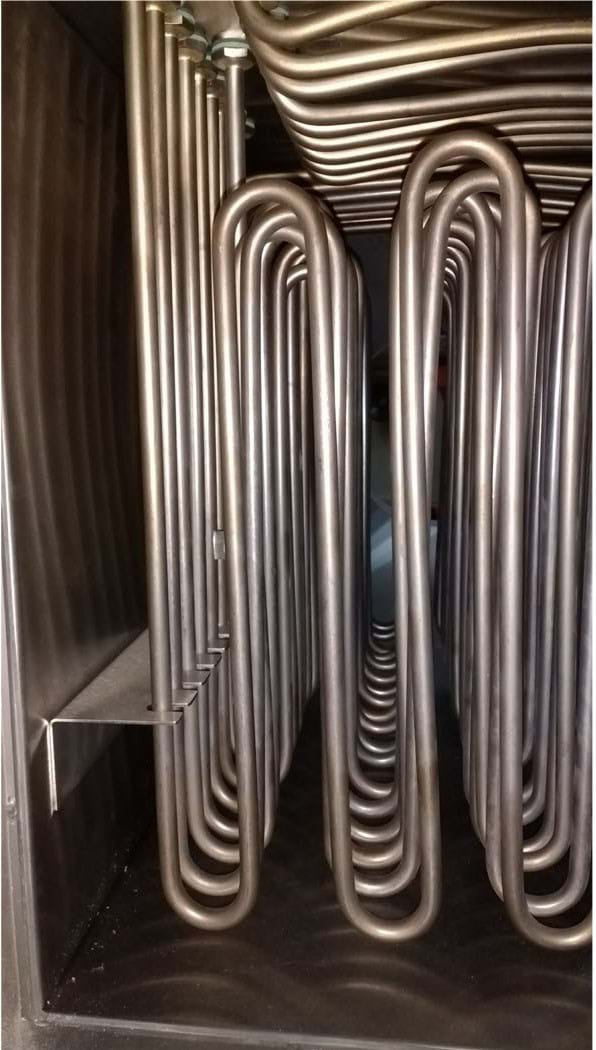
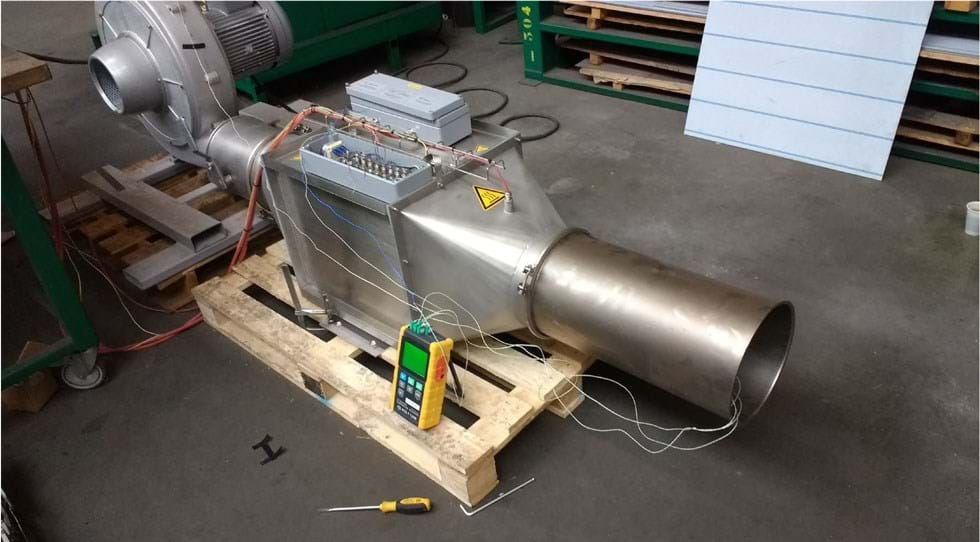
Design considerations: temperature, sparks, and overheating
After completing the design phase, we made the following design changes to the equipment:
Surface temperature
Ordinary process heaters can quickly reach surface temperatures exceeding 600°C, well above the minimum ignition temperature (MIT) of tea dust particles, which is around 510°C. Following ATEX guidelines, we calculated the maximum allowable surface temperature by taking the lower of two values: two-thirds of the MIT or the smouldering temperature minus 75°C. This calculation resulted in a maximum surface temperature of 225°C for our heater.
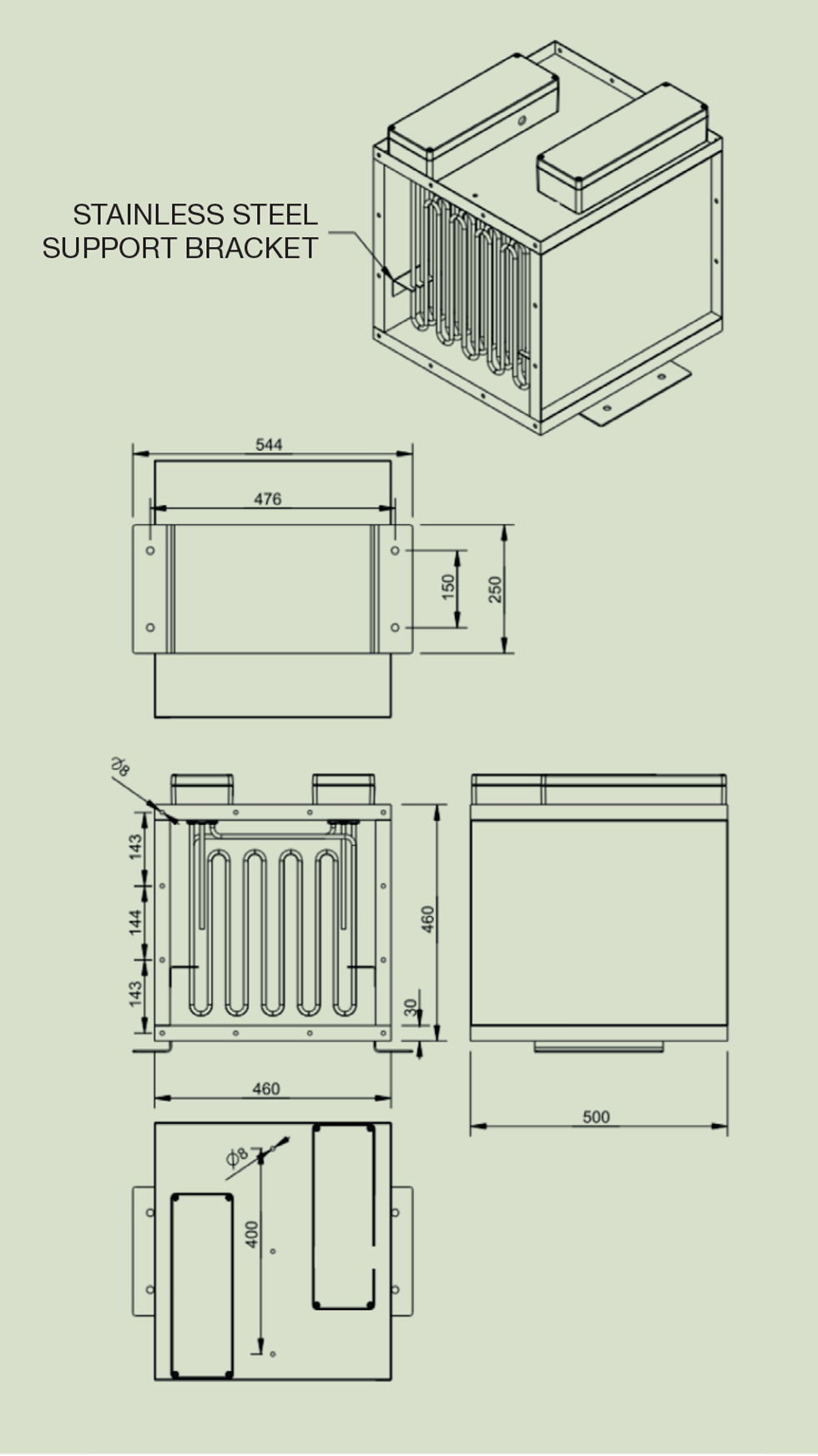
Non-sparking and impact-proof
To prevent sparks that could ignite the dust cloud, we ensured that all interior components of the heater and control panel were designed to be non-sparking during normal operation.
Another aspect of our design was engineering the equipment to withstand impacts of up to 7 J. This impact resistance safeguards against accidental drops or collisions during maintenance or operation, which could otherwise compromise the integrity of the explosion-proof enclosure.
You might wonder: why does a tea leaf mixer require such a robust, impact-proof design? The rationale lies in the fact that any visible damage to the equipment could invalidate its explosion-proof certification, as it would no longer adhere to the original approved design specifications.
In a real-world scenario, this could occur if a maintenance worker inadvertently drops a tool onto the mixer during servicing. While this may seem like an unnecessary precaution, it is often such unforeseen incidents involving damaged equipment that can lead to explosions or fires in hazardous areas.
To achieve the required 7 J impact resistance, we implemented design modifications, including reinforced support brackets for the heating coils within the mixer enclosure.
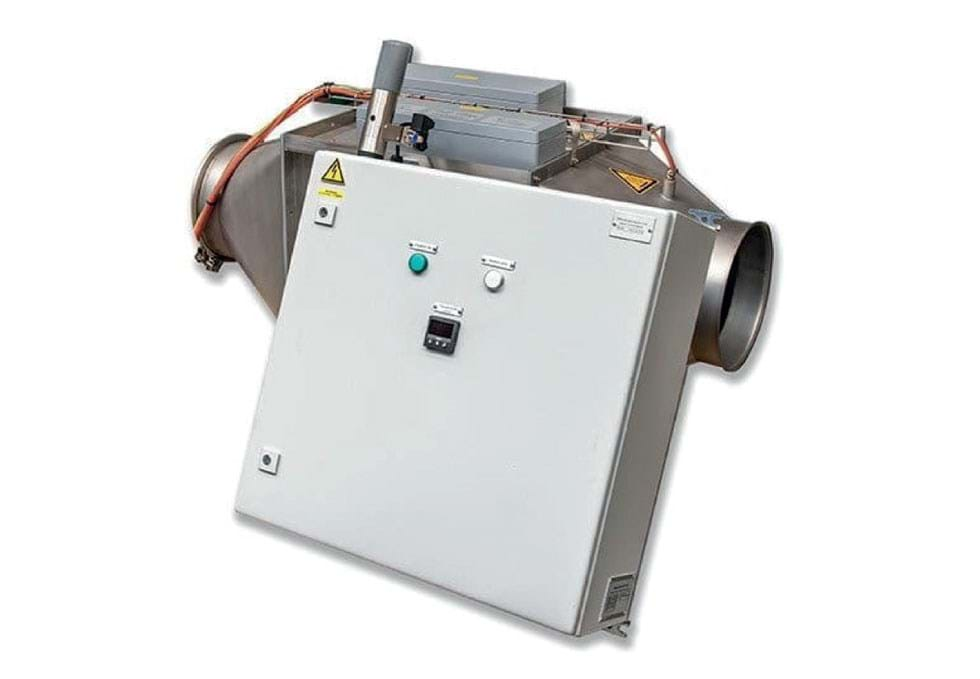
Overheating protection
Operating in ATEX Zone 22, we had to account for potential errors that could occur during normal use, such as a fan failure that would halt the cooling of the heating elements, leading to overheating.
If left unchecked, such overheating could raise the surface temperature high enough to serve as an ignition source for the combustible tea dust present in and around the mixer. To mitigate the risk, our design incorporated a fail-safe mechanism that would immediately cut off power to the heater in overheating scenarios, ensuring safety is maintained.
Additionally, the control box housing the electrical components was enclosed in a locked, IP66-rated enclosure, preventing the ingress of dust particles that could potentially cause ignition hazards within the circuitry.
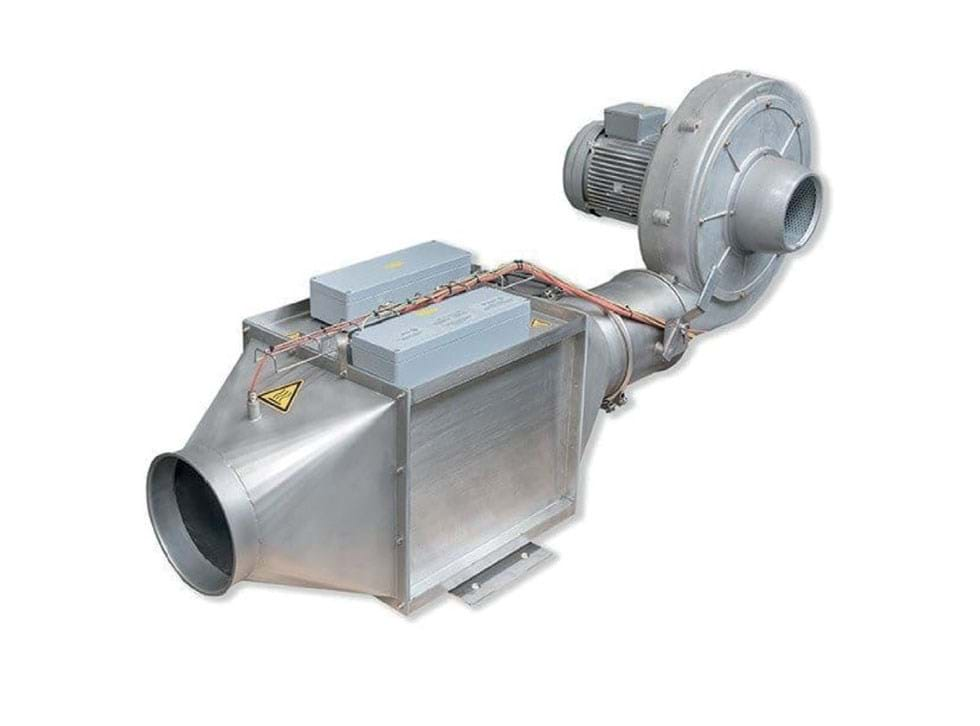
Engineering challenges and solutions
While the theoretical design seemed sound, we encountered a practical challenge during testing: the air vortex pattern inside the heater caused uneven heating, with some elements becoming too hot. We set out to solve this by using an infrared camera to identify and measure the temperature hotspots at various positions within the heater. Based on these findings, we modified the airflow design to achieve uniform heating. In this new design, we also made sure to prevent any part from exceeding the maximum allowable temperature.
A safe and efficient solution
As engineers, our responsibilities extend beyond mere functionality; they encompass creating solutions that prioritise safety, especially in challenging environments.
Through careful engineering and adherence to ATEX guidelines, we successfully designed and manufactured an ATEX-compliant heater for drying tea leaves in Zone 22 atmospheres. Our solution not only met the client’s safety requirements but also ensured optimal drying conditions, preserving the quality of the tea leaves. The perfect blend.
Reference
Recent Editions
Catch up on the latest news, views and jobs from The Chemical Engineer. Below are the four latest issues. View a wider selection of the archive from within the Magazine section of this site.




